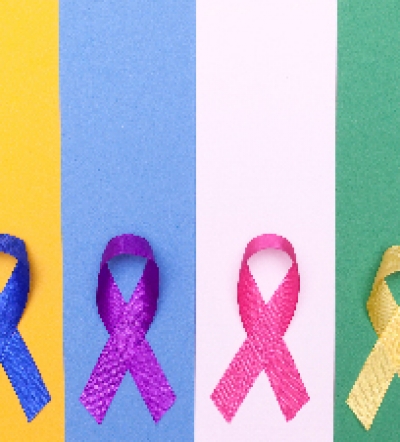
Dr Nirasha Chiranjan
"I have lived through the effects of cancer on close family and friends. This first-hand experience inspired me to pursue my studies in Oncology.
Having walked this road, I am determined to give my patients the care they need, and so rightfully deserve. I remain steadfast in my dedication to my patients, their families and have long ago resolved to make this walk with them - my life's work." - Dr Nirasha Chiranjan.
Dr Chiranjan completed her MBchB at the University of Cape Town in 2006. Following two years of internship at McCord's Hospital in Durban, Dr Chiranjan completed a year of community service at Evander Hospital in Mpumalanga. In 2010, she joined the Radiation Oncology Department at the Charlotte Maxeke Johannesburg Academic Hospital.
Dr Chiranjan was successfully admitted as a Fellow of the College of Radiation Oncologists in early 2014 and joined DMO in August of the same year, where she is now a senior partner.
She consults at the Ahmed Kathrada Cancer Institute, Sandton Oncology and the West Rand Oncology Centre and is part of a team of seven Oncologists that consult at the DMO locations.
Dr Chiranjan treats a broad range of malignancies, with special interest in prostate, breast, gynaecological, head and neck, and central nervous system areas. She is an active participant in several multi-disciplinary forums related to cancer treatment and also has a keen interest in screening processes.
Being available to the patient is of importance to us. Our Oncologists are available daily to our patients, throughout their treatment programme, and beyond for follow up care and are rostered on call, 24 / 7 - all year.
NEWS FEED
Prostate Cancer
Prostate cancer is the second most common cancer in men worldwide. Screening for prostate-specific antigen (P.S.A.) levels have led to prostate cancer being increasingly diagnosed.
Common symptoms of prostate cancer are difficulty urinating, reduced stream of urine, blood in the semen, erectile dysfunction and discomfort in the pelvic area.
The initial treatment options for patients with non-metastatic prostate cancer (cancer that has not spread beyond the primary site to other areas in the body) consists of active surveillance, radical prostatectomy and radiotherapy. The choice of treatment is determined by clinical staging (progression of disease), the P.S.A. level, Gleason score, patient preference, life expectancy, patient functional status and resource availability1-3.
What is Prostate Brachytherapy?
Prostate brachytherapy is a form of internal radiation therapy used to treat prostate cancer. It’s an established and effective cancer treatment, and involves placing temporary or permanent radioactive sources into the prostate tissue. This allows high doses of radiation to be delivered to the cancer cells, within the prostate gland, whilst reducing radiation of normal tissues.
A major advantage of brachytherapy is that it can be completed within 1-2 days with little time lost from normal activities. Depending on the risk category of the patient, it can be used alone or in combination with external beam radiotherapy. New developments in prostate brachytherapy include its use in salvage treatment, following relapse in patients who received prior radiotherapy and as a boost to permit dose escalation 2;4.
How is it performed?
The patient undergoes general or spinal anaesthesia. Radiation sources are then placed in the prostate under rectal ultrasound guidance. Low-dose rate brachytherapy (L.D.R.) is delivered through a vessel known as ‘’seeds’’ and is permanent; whilst high-dose rate brachytherapy (HDR) is delivered with hollow catheters and is temporary.
What are the side effects?
Anatomically the prostate gland is close to the urethra, bladder and rectum. These structures can develop acute and late side effects from prostate brachytherapy. Most commonly, there can be worsening of urinary symptoms, such as increased frequency, nocturia (frequent urination at night), urination hesitancy, urgency or a weak urinary stream and urinary retention. Uncommon complications are urethral strictures, rectal bleeding, rectal fistulas and erectile dysfunction 2;5.
Which patients should not have bracytherapy?
Patients with the following considerations may not be recommended for this type of treatment:
• Limited lifespan
• Unacceptable operative risks
• International prostate symptom score (IPSS) score >20
• Transurethral resection of the prostate (TURP) within 3-6 months
• Rectal fistula
• Pubic arch interference
What can be expected after the procedure?
Patients may experience mild discomfort and swelling in the perineum where the needles were placed. Ice packs and analgesia may be used for alleviation of discomfort. Patients should avoid strenuous activities that may irritate the perineum, like bike riding and running. Follow-up PSA testing will be ordered by your radiation oncologist.
The take home message:
Prostate brachytherapy is a cost effective, convenient radiation technique with excellent oncologic outcomes that is recommended for the curative treatment of men with prostate cancer.
Author: Dr Nirsha Chiranjan - Radiation Oncologist at DMO.
REFERENCES
1. National Comprehensive Cancer Network (NCCN). NCCN Clinical practice guidelines in oncology.
2. THE GEC ESTRO HANDBOOK OF BRACHYTHERAPY
3. Bekelman JE, Rumble RB, Chen RC, et al. Clinically Localized Prostate Cancer: ASCO Clinical Practice Guideline Endorsement of an American Urological Association/American Society for Radiation Oncology/Society of Urologic Oncology Guideline. J. Clin Oncol 2018; :JCO1800606.
4. Chin J, Rumble RB, Kollmeier M, et al. Brachytherapy for patients with prostate cancer: American Society of Clinical Oncology/Cancer Care Ontario joint guideline update. J Clin Oncol 2017.
5. Keyes M, Miller S, Moravan V, et al. Predictive factors for acute and late urinary toxicity after permanent prostate brachytherapy: long-term outcome in 712 consecutive patients. Int J Radiat Oncol Biol Phys 2009; 73:1023.
What are gynaecological cancers?
Gynaecological Cancer Awareness Month aims to encourage more women to be aware of the signs and symptoms of the disease and preventive strategies. It is a month that encourages women to openly speak about their health without shame or embarrassment. It highlights the need for better sex education amongst both men and women.
Early detection can lead to effective treatment and a better prognosis.
Gynaecological cancers are malignancies that develop in a woman’s reproductive tract. These include cervical, ovarian, endometrial, vulvar and vaginal cancer.
Cervical and endometrial cancer are the two most common cancers affecting South African women.
Cervical cancer
The cervix is the tissue connecting the uterus to the vagina. 1 in 40 women in SA are affected by cervical cancer. It’s the second most common cancer affecting women in SA, after breast cancer. Cervical cancer kills at least eight women every day *1.
HPV
A common sexually transmitted virus, human papillomavirus (HPV), is the most common risk factor for cervical cancer.
There are many different strains of HPV but the development of cervical cancer is linked to high-risk strains identified as strains 16 and 18.
Signs and symptoms can include:
- Abnormal vaginal bleeding. It could be bleeding after menopause, bleeding after sex, or bleeding between periods.
- Vaginal discharge which could be copious, foul-smelling and be accompanied with pelvic pain.
- Abdomen pain and backache.
- In advanced disease, women may complain of poor appetite; weight loss; bone pain; swelling of one of the lower legs; loss of bowel and bladder control; blood in urine or stool *4.
Screening
Screening is in the form of co-testing, made up of Pap smears and HPV testing. The frequency in which women get Pap smears is not the same for everyone.
How often a woman needs a Pap smear depends on several factors, such as age, general health, and findings from previous Pap smears. Women are then placed into an average- or high-risk category.
The best way to detect precancerous changes and early cervical cancer is to have regular screening tests. Screening women for HPV is a very effective way of preventing cervical cancer. Women between the ages of 21 - 65 should have three to five yearly Pap smears, depending on risk category. Women between the ages of 25 - 65 should be tested for HPV as well (co-testing) *5,6,7.
We promote conversation between women and their Doctors to ensure that they understand their personal risk profile and how frequently they should screen.
Prevention
Get vaccinated
The HPV vaccine protects against the two strains of HPV that are responsible for 70 - 80% of cervical cancers. There are two vaccines available in South Africa. The bivalent vaccine is approved for both girls and boys from the age of nine and is available at most retail pharmacies and school-based vaccination programmes.
Lifestyle modification
Stop smoking. Smoking produces chemicals that may damage the cells of the cervix and make cancer more likely to develop. Quitting smoking or, better still, never starting, will reduce your risk.
Limit the number of sexual partners and practise safe sex to prevent HIV infection or sexually transmitted diseases. HIV positive women have a high prevalence of co-infection with HPV. If you are HIV positive, it is important to be compliant on HAART and have regular Pap smears.
Endometrial cancer
The endometrium is the tissue lining the inner cavity of the uterus. Endometrial Cancer, also known as uterine cancer, is the most common gynaecologic malignancy in developed countries and the second most common in developing countries.
Risk factors for this type of cancer include many variables such as age, unopposed oestrogen therapy, Tamoxifen therapy (less than 1% per year), a wide oestrogen window (early menstruation and late menopause), Nulliparity (a woman never having given birth), Polycystic ovarian syndrome, obesity, diabetes, Lynch syndrome, Cowden syndrome and a family history of breast, ovarian, colon, endometrial cancer *8
Signs and symptoms
- Abnormal uterine bleeding is the cardinal symptom of endometrial cancer.
- Incidental finding on imaging. A thickened endometrial lining is sometimes found incidentally on ultrasound, CT or MRI performed for another indication.
- Incidental finding at hysterectomy. Endometrial carcinoma or hyperplasia is sometimes discovered incidentally when hysterectomy is performed for benign disease.
Screening and prevention Routine screening of asymptomatic women is not advised. Lifestyle modification includes maintaining a healthy weight, exercising regularly and healthy diet may be preventative *9.
References:
- CANSA: nicd.ac.za
- Comparison of risk factors for invasive squamous cell carcinoma and adenocarcinoma of the cervix: collaborative reanalysis of individual data on 8,097 women with squamous cell carcinoma and 1,374 women with adenocarcinoma from 12 epidemiological studies.AU, International Collaboration of Epidemiological Studies of Cervical Cancer SO Int J Cancer. 2007;120(4):885.
- Human papillomavirus is a necessary cause of invasive cervical cancer worldwide.AUWalboomers JM, Jacobs MV, Manos MM, Bosch FX, Kummer JA, Shah KV, Snijders PJ, Peto J, Meijer CJ, Muñoz N SO J Pathol. 1999;189(1):12.
- DiSaia PJ, Creasman WT. Invasive cervical cancer. In: Clinical Gynecologic Oncology, 7th ed., Mosby Elsevier, Philadelphia 2007. p.55.
- ACOG Committee Opinion No. 463: Cervical cancer in adolescents: screening, evaluation, and management. American College of Obstetricians and Gynecologists SO Obstet Gynecol. 2010;116(2 Pt 1):469.
- European Cervical Cancer Association. http://www.ecca.info/ (Accessed on December 16, 2014).
- Practice Bulletin No. 168: Cervical Cancer Screening and Prevention.Committee on Practice Bulletins—Gynecology SO Obstet Gynecol. 2016;128(4):e111.
- ACOG practice bulletin, clinical management guidelines for obstetrician-gynecologists, number 65, August 2005: management of endometrial cancer. American College of Obstetricians and Gynecologists Obstet Gynecol. 2005;106(2):413.
- UPTODATE
A cancer survivor refers to any person who has been diagnosed with cancer. Survivorship begins at the time of diagnosis and includes the periods of initial treatment with intent to cure, cancer-free survival, chronic or intermittent disease, and end of life care.
There are millions of survivors worldwide. This number is expected to grow due to improvements in cancer screening, increases in life expectancy following definitive cancer treatment and the aging of the population. For cancer survivors who are no longer in active treatment, health care needs include surveillance for recurrence, screening for the development of subsequent primary cancers, monitoring and intervention for the long-term and late physical and psychological effects of cancer and preventive care.
For some survivors, the consequences of cancer are minimal with many returning back to a normal life after treatment. However, many survivors experience physical and psychosocial effects of cancer and its treatment.
Risk of recurrence:
Following treatment of a primary cancer, survivors are at risk for recurrence. Recurrences may occur where the cancer was originally diagnosed or in a different location. The timing and patterns of recurrence, particularly of distant disease, vary by cancer type and stage at diagnosis. Patients with the highest risk of developing a second (subsequent) primary cancer includes survivors of head and neck cancers and Hodgkin lymphoma.
Subsequent primary cancers in cancer survivors occur due to multiple clinical factors, including prior treatment for the primary cancer (eg, chemotherapy, radiation therapy) lifestyle habits (eg, smoking, obesity) and genetic factors. This data suggests an opportunity for doctors to reduce or prevent the risk of subsequent primary cancers in cancer survivors through lifestyle interventions (eg, cease smoking, alcohol counselling, diet, and physical activity) as well as cancer screening and genetic counselling.
Monitoring for long-term effects of cancer and its treatment
Survivors are at risk for other conditions related to both their disease and its treatment, which are of increasing importance as cancer survival rates improve. Late physical effects of treatment may include pain, fatigue, depression, lymphoedema, urinary and bowel problems, cardiotoxicity, subsequent malignancy, peripheral neuropathy, hearing loss, infection, loss of bone mass, premature menopause in women and sexual dysfunction. Your Oncologist will advise you of the risks and side effects of treatment, as these vary between various treatment approaches.
Psychosocial well-being — Cancer survivors have been shown to experience a number of difficulties that can impact general quality of life, including depression, anxiety, fatigue, cognitive limitations, sleep problems, sexual dysfunction, pain, and opioid dependence.
A number of interventions for cancer survivors have been evaluated, with both psychosocial and exercise interventions reporting beneficial effects on quality of life.
Fertility and parenthood — Cancer therapy may put male and female survivors at risk for infertility. Patients may be concerned about their chances of getting pregnant, suffering a miscarriage, and/or achieving a successful pregnancy outcome. Furthermore, cancer survivors may be fearful that their history of cancer or its treatment will have an adverse impact on offspring conceived after their cancer treatment, such as placing them at risk for malignancy, congenital anomalies, or impaired growth and development. They may also be concerned about the risks of pregnancy on cancer recurrence. For these patients, education regarding reproductive function is an important aspect of their care.
Preventative Care
- Both diet and physical activity can improve the quality of life and can minimize both disease and treatment-related side effects in cancer survivors.
- Smoking — Cancer survivors are at increased risk for subsequent cancers, and the risks are significantly higher among those who continue to smoke.
- Limit alcohol consumption
- Genetic evaluation and testing-genetic factors may have important implications for the survivor's family members
Survivorship Care Plan:
Cancer survivorship is often a hard transition to a new normal. A cancer survivorship care plan is often formulated between the patient and treatment team. It is a record of your cancer and treatment history. It may list the follow up needed, future tests required, possible long-term side effects and preventative strategies.
Conclusion:
Cancer survivors want health, longevity and quality of life. The road to these outcomes is often riddled with obstacles involving medical uncertainty, treatment outcomes, social expectations and financial burden. An active relationship between Health Practitioners and Patients is important at all levels of care through the cancer journey.
The full referenced article is available on request.
By Dr Nirasha Chiranjan





